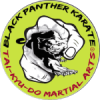
Martial arts’ impact on popular culture: films and television shows
Martial Arts in Pop Culture: Influence on Movies and TV Shows
Introduction:
Pop culture and martial arts have combined to produce a dynamic synergy that captivates audiences all over the world. Hollywood and television productions have used martial arts as a prominent and influential element, from memorable combat scenes to elaborate choreography. We’ll look at the martial arts’ widespread influence on storytelling, character development, and the representation of self-defense training in this blog article.
From the Silver Screen to Living Rooms:
Once exclusive to the specialized field of martial arts cinema, martial arts have become a worldwide craze across cultural divides. The growth of film, where martial arts films have received great praise, is where pop culture’s influence on martial arts is most noticeable. Martial arts has made a big impression on film history, from the classic Bruce Lee flicks of the 1970s to the contemporary epics of today. Keyword Insertion: The way martial arts films depict self-defense training has affected viewers’ perceptions and appreciation of the discipline, which has helped to explain why self-defense training is so popular in real life.
Iconic Martial Arts Figures:
Heroes and Villains:
Martial arts movies and TV shows have given rise to iconic figures who have become cultural symbols. From the virtuous hero, exemplified by Bruce Lee’s legendary characters, to the complex antiheroes and formidable villains, martial arts figures transcend their fictional worlds to inspire and resonate with audiences. These characters often embody the discipline, resilience, and self-defense training associated with martial arts. Keyword Insertion: The portrayal of characters engaged in self-defense training in martial arts narratives shapes perceptions of heroism and villainy, influencing the broader cultural understanding of self-defense.
Cinematic Choreography as an Art Form:
The choreography of martial arts scenes in movies and TV shows has become an art form in itself. Choreographers and stunt teams meticulously design sequences that showcase the fluidity and precision of martial arts techniques. The result is visually stunning fight scenes that captivate audiences and elevate the appreciation of martial arts as a dynamic and expressive form of movement. Keyword Insertion: The portrayal of self-defense training through meticulously crafted choreography in martial arts films has contributed to a heightened awareness and appreciation of the art of self-defense.
Martial Arts as a Plot Device:
Martial arts is often integrated into the narrative as a powerful plot device. Whether it’s a protagonist seeking self-discovery through martial arts training or a storyline centered around a martial arts tournament, the practice becomes a central theme that drives character development and plot progression. This integration reinforces the idea that martial arts, including self-defense training, is not just a physical activity but a transformative journey. Keyword Insertion: The incorporation of self-defense training into the plot of martial arts movies emphasizes the broader impact of self-defense as a catalyst for personal growth and development.
Global Appeal and Cross-Cultural Fusion:
Martial arts movies and TV shows have a unique ability to transcend cultural barriers. The global appeal of martial arts narratives, from Chinese wuxia films to Japanese samurai epics, showcases the universal themes of honor, discipline, and self-defense. Additionally, the fusion of martial arts with other genres, such as science fiction or fantasy, has led to innovative storytelling that resonates with diverse audiences. Keyword Insertion: The global popularity of martial arts movies contributes to a widespread understanding of the importance of self-defense training as a universal skill.
Influence on Martial Arts Training Trends:
The portrayal of martial arts in pop culture has a direct impact on trends in martial arts training. Techniques and styles showcased in movies often influence what individuals seek to learn in real-life martial arts classes. The desire to emulate the skills seen on screen, including self-defense training, has led to an increased interest in specific martial arts disciplines. Keyword Insertion: The depiction of self-defense training in popular media has influenced the choices individuals make when seeking martial arts training, reflecting a desire to acquire practical and effective self-defense skills.
Empowerment and Representation:
Martial arts movies have played a crucial role in empowering marginalized communities and providing representation on screen. Characters from diverse backgrounds and cultures engaging in martial arts, including self-defense training, contribute to a more inclusive and representative portrayal of the martial arts world. This representation extends beyond ethnicity to include gender, age, and physical abilities.
Keyword Insertion:
The portrayal of characters engaging in self-defense training in martial arts narratives contributes to a broader narrative of empowerment and representation, inspiring individuals from diverse backgrounds to explore self-defense.
Real-Life Impact: Martial Arts Beyond the Screen:
The influence of martial arts in pop culture extends beyond entertainment to real-life impact. The popularity of martial arts movies has led to an increased interest in self-defense training and martial arts classes. Individuals inspired by on-screen heroes and heroines seek to embark on their own martial arts journeys, recognizing the broader benefits of physical fitness, mental resilience, and self-defense skills. Keyword Insertion: The depiction of self-defense training in martial arts movies has directly contributed to the real-world impact of increasing interest in self-defense classes and martial arts training.
Digital Age and Streaming Platforms:
The digital age has further amplified the influence of martial arts in pop culture. Streaming platforms provide easy access to a vast library of martial arts movies and TV shows, reaching audiences globally. This accessibility ensures that the impact of martial arts, including self-defense training, continues to resonate with new generations of viewers. Keyword Insertion: The portrayal of self-defense training in martial arts content on streaming platforms contributes to a continuous and evolving cultural narrative surrounding the importance of self-defense.
Educational Opportunities and Martial Arts Integration in Schools:
The popularity of martial arts in pop culture has paved the way for its integration into educational settings. Schools recognize the value of martial arts, not just as a form of entertainment but as a tool for holistic education. Martial arts programs, including self-defense training, are being incorporated into school curricula, providing students with an opportunity to experience the physical, mental, and character-building aspects of the practice. Keyword Insertion: The influence of self-defense training in martial arts narratives has inspired educational institutions to integrate martial arts programs, emphasizing the practical skills and holistic benefits of self-defense.
Conclusion:
Martial arts’ influence on movies and TV shows extends far beyond the screen, shaping cultural perceptions, inspiring real-world practices, and contributing to a global narrative of empowerment, discipline, and self-defense training. As the cinematic portrayal of martial arts continues to evolve, so does its impact on the way audiences perceive the art and its broader applications. From iconic fight scenes to the representation of diverse martial artists, the influence of martial arts in pop culture is a dynamic force that continues to resonate and inspire audiences worldwide.

